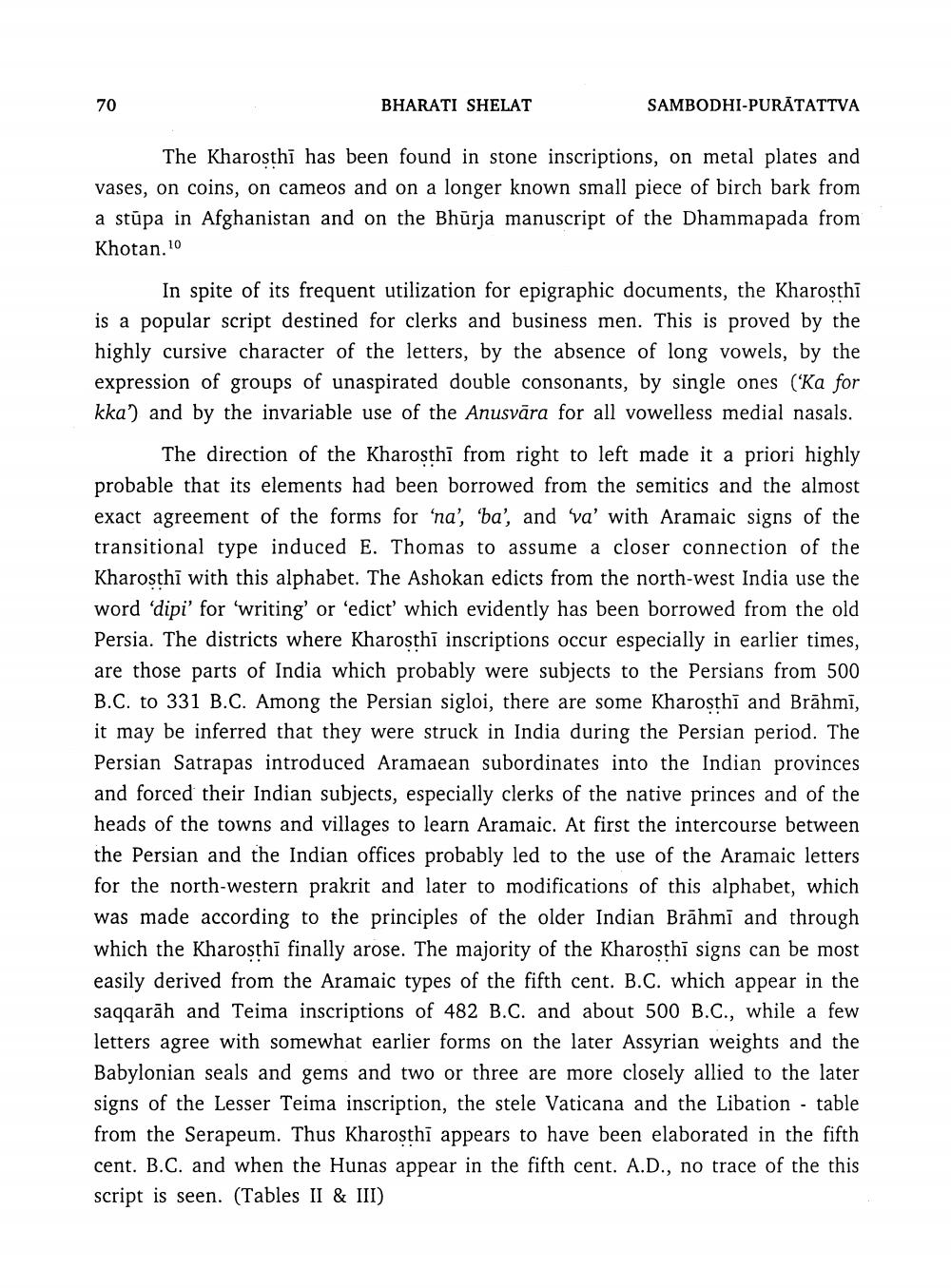________________
70
BHARATI SHELAT
SAMBODHI-PURĀTATTVA
The Kharosthi has been found in stone inscriptions, on metal plates and vases, on coins, on cameos and on a longer known small piece of birch bark from a stúpa in Afghanistan and on the Bhurja manuscript of the Dhammapada from Khotan 10
In spite of its frequent utilization for epigraphic documents, the Kharosthi is a popular script destined for clerks and business men. This is proved by the highly cursive character of the letters, by the absence of long vowels, by the expression of groups of unaspirated double consonants, by single ones ('Ka for kka') and by the invariable use of the Anusvāra for all vowelless medial nasals.
The direction of the Kharosthi from right to left made it a priori highly probable that its elements had been borrowed from the semitics and the almost exact agreement of the forms for 'na', 'ba', and 'va' with Aramaic signs of the transitional type induced E. Thomas to assume a closer connection of the Kharosthi with this alphabet. The Ashokan edicts from the north-west India use the word 'dipi' for 'writing' or 'edict' which evidently has been borrowed from the old Persia. The districts where Kharosthi inscriptions occur especially in earlier times, are those parts of India which probably were subjects to the Persians from 500 B.C. to 331 B.C. Among the Persian sigloi, there are some Kharoṣṭhi and Brahmi, it may be inferred that they were struck in India during the Persian period. The Persian Satrapas introduced Aramaean subordinates into the Indian provinces and forced their Indian subjects, especially clerks of the native princes and of the heads of the towns and villages to learn Aramaic. At first the intercourse between the Persian and the Indian offices probably led to the use of the Aramaic letters for the north-western prakrit and later to modifications of this alphabet, which was made according to the principles of the older Indian Brähmi and through which the Kharosthi finally arose. The majority of the Kharosthi signs can be most easily derived from the Aramaic types of the fifth cent. B.C. which appear in the saqqarah and Teima inscriptions of 482 B.C. and about 500 B.C., while a few letters agree with somewhat earlier forms on the later Assyrian weights and the Babylonian seals and gems and two or three are more closely allied to the later signs of the Lesser Teima inscription, the stele Vaticana and the Libation table from the Serapeum. Thus Kharosthi appears to have been elaborated in the fifth cent. B.C. and when the Hunas appear in the fifth cent. A.D., no trace of the this script is seen. (Tables II & III)




